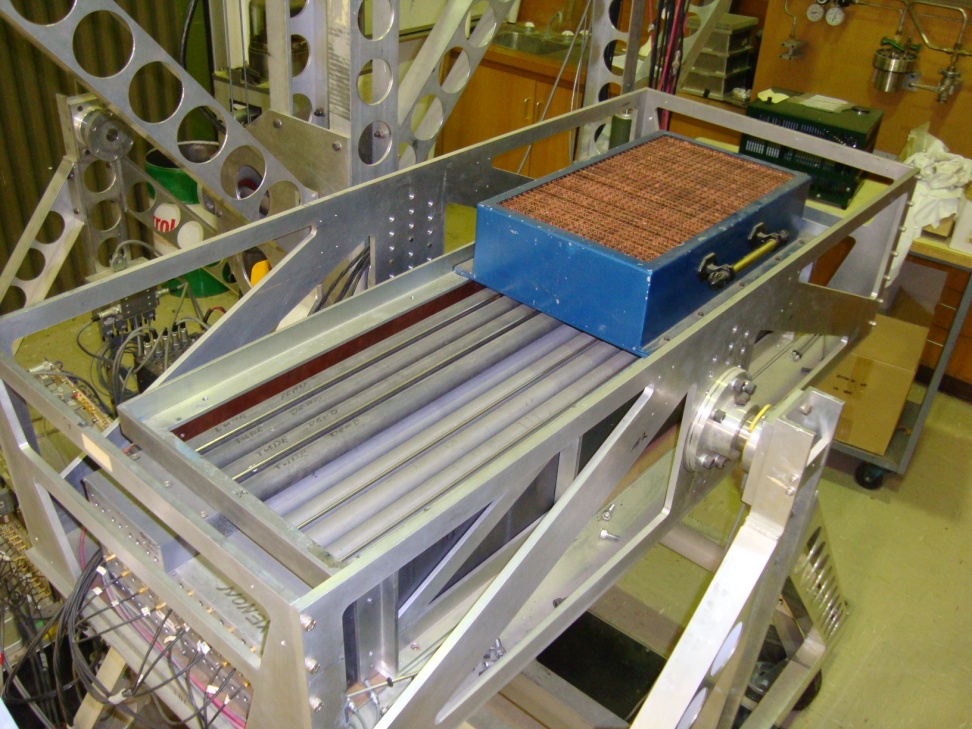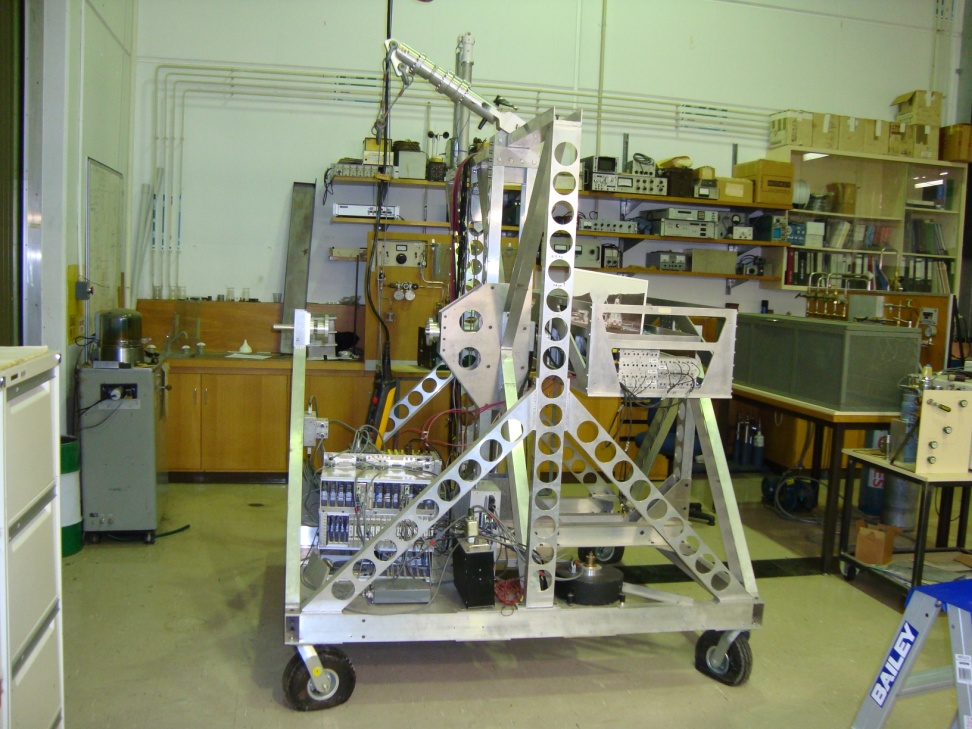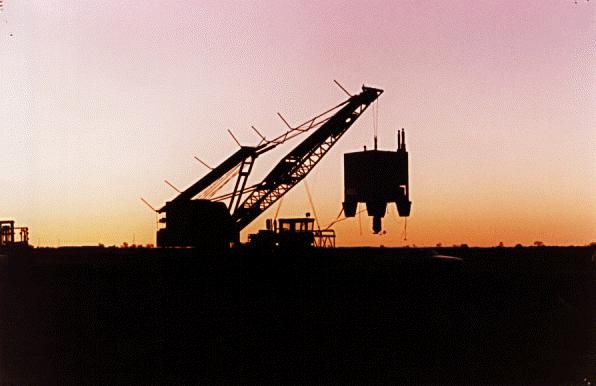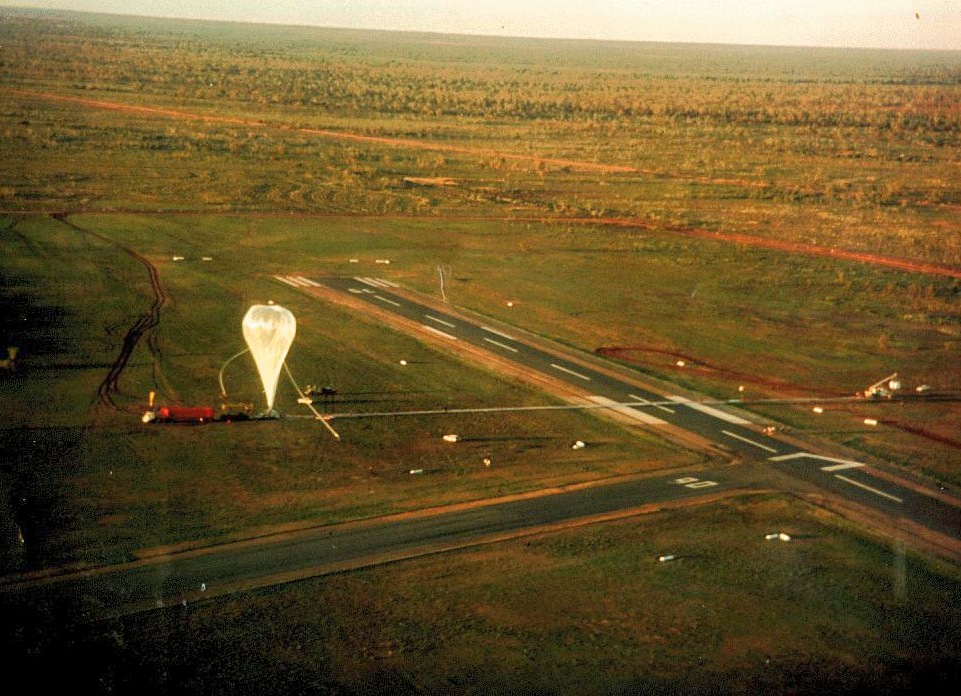Purpose of the flight and payload description
AXEL was the acronym of Astrophysical X-Ray Experimental Laboratory an X-Ray experiment carried out in 1995 through a cooperation between the Physics Department of the Australian Defence Force Academy, the Space Physics Group of the Tata Institute of Fundamental Research from India, the Institut fiir Astronomie und Astrophysik, Astronomie Universitat Tubingen from Germany and the Blackett Laboratory of the Imperial College of Science from the United Kingdom.
The payload carried two X-ray detector systems. The first system was an array of 32 high pressure proportional counters filled with argon and xenon at pressures up to 30 atmosphere. The second system was a phoswich scintillator detector used in the Anger mode. The proportional counter array was flown with a mechanical collimator, while a rotational modulation collimator was used with the phoswich to provide fine imaging capability.
Details of the balloon flight
Balloon launched on: 9/26/1995 at 22:12 utc
Launch site: Australian Balloon Launching Station, Alice Springs, Australia
Balloon launched by: National Scientific Balloon Facility (NSBF)
Balloon manufacturer/size/composition: Zero Pressure Balloon N35E-8/8T-13.60-101
Balloon serial number: R13.60-1E-101
Flight identification number: 399N
End of flight (L for landing time, W for last contact, otherwise termination time): 9/27/1995 at 22:22 utc
Balloon flight duration (F: time at float only, otherwise total flight time in d:days / h:hours or m:minutes - ): 24 h
Landing site: 47 km NE of Giles Weather Station, Western Australia
Payload weight: ~ 1000 kg
The balloon was launched from Alice Springs at 7.44 AM local time on a 0.5 million cubic metre balloon. It reached its desired float altitude of 3.9 mb at 10.00 AM and the flight lasted 24 hours, during which all payload subsystems performed normally. The astrophysical sources successfully observed during the flight included 3C273, NGC 5506, Sco X-1, GX1+4, 1E1740.7-2924, and MK509. The flight was terminated just over the Western Australian border. The payload was parachuted to the ground, and impacted about 44 km NE of the Giles weather station. Payload recovery was completed within 48 hours.
External references
- A phoswich Anger camera for hard X-ray and low energy gamma-ray astronomy Advances in Space Research, 17(9), 87, 1996
- ASTRONOMICAL SOCIETY OF AUSTRALIA Newsletter 20 - March 1996
- Axel: A balloon-borne X-ray astronomy experiment Publications Astronomical Society of Australia, vol. 13, no. 2, p. 156-161
- Gas amplification in high pressure proportional counters Nuclear Instruments and Methods in Physics Research Section A: Accelerators, Spectrometers, Detectors and Associated Equipment, 329(1-2), 140, 1993
- NASA Balloon Flights (1989-1998) in NASA Historical Data Book, Vol. VII: NASA Launch Systems, Space Transportation, Human Spaceflight, and Space Science, 1989-1998
- Ultra-high pressure proportional counters Part II. Xenon Nuclear Instruments and Methods in Physics Research Section A: Accelerators, Spectrometers, Detectors and Associated Equipment, 344(2), 384, 1994
191If you consider this website interesting or useful, you can help me to keep it up and running with a small donation to cover the operational costs. Just the equivalent of the price of a cup of coffee helps a lot.





